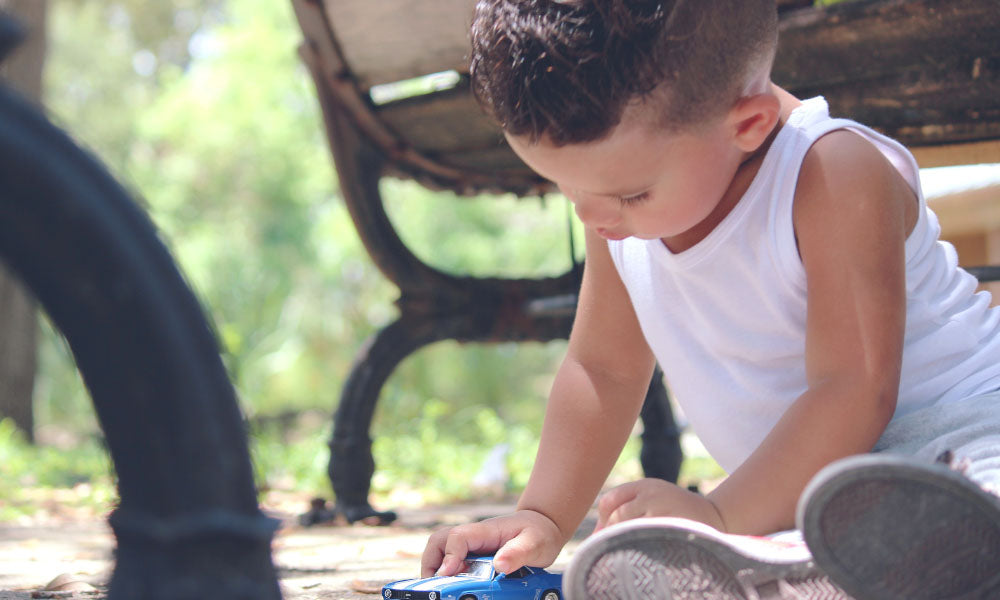A child’s first step, first jump, first song – each is a momentous occasion in a little one’s life that naturally elicits praise. Even eating all those peas (with a spoon, no less!) calls for a “good job.” Busy praising all those firsts (and seconds and thirds), we may have no idea how much our praise contributes to our child’s development.
It’s often said that young children are little sponges, soaking in their environment and learning from it. “Kids pick up on messages that parents are giving that parents may not even realize they’re giving,” says Elizabeth Gunderson, Ph.D., an assistant professor of psychology at Temple University. For instance, researchers found parents’ use of a type of praise called “process praise” with one- to three-year-olds predicted their child’s “growth mindset” and desire for challenge five years later. Gunderson is the lead author of the study, which was published in the journal Child Development. So what exactly is “process praise”? And why is a “growth mindset” so important?
Process praise
To put it simply, process praise is praise that emphasizes the work, effort, or actions of the child. When we tell our daughters “good helping” for helping put away toys or “good singing” for singing a tune, we are using process praise. Even a simple “good job” is considered process praise.
By contrast, when we say “good girl,” “big boy,” or “you’re so smart,” we are using person praise. Unlike process praise, person praise is praise that gives a fixed label to a child. Consider the child who helps put away her toys or sings. Where process praise is “good helping” or “good singing,” person praise is “you’re a good helper” or “you’re a good singer.”
Growth mindset
Many of us are likely unaware when and why we gravitate toward one type of praise over the other. But those parents who use process praise are helping their children adopt a “growth mindset.” Carol Dweck, a professor of psychology at Stanford University and author of “Mindset: The New Psychology of Success”, has spent decades studying “growth” and “fixed” mindsets.
With a “growth mindset,” people believe that basic abilities, like intelligence or talent, can be developed through dedication, effort, and hard work. In contrast, with a “fixed mindset,” people believe those qualities are fixed traits (i.e., you’re only born with so much). A growth mindset leads to a desire to learn, embrace challenges, and persist whereas a fixed mindset leads to a desire to look smart and therefore avoid challenges and give up more easily.
There’s a lot of research showing the kids who have growth mindsets tend to do better academically, says Gunderson. For instance, researchers found that first and second graders’ growth mindsets at the beginning of the school year predicted greater improvement in math over the course of the year. “If you believe that your intelligence is malleable and something you can change with effort, that tends to make you have a positive attitude towards effort,” she says, explaining that those with a growth mindset believe that intelligence can be improved with hard work. If you have a fixed mindset, you may believe working hard is evidence that you’re not very smart, and that belief can decrease your motivation and drive.
“In the real world, working hard actually does get you to better results usually, so having a positive attitude towards effort is really important,” says Gunderson. Gunderson also notes, however, that having a fixed mindset isn’t necessarily a bad thing until children face some kind of challenge or failure. In fact, a fixed mindset can be motivating…for a time.
“Thinking ‘I’m smart. I have a lot of intelligence’ can actually be motivating, but as soon as you face any kind of challenge or failure, it tends to be a much more fragile way of thinking.” When kids who think they have fixed ability suddenly aren’t able to do something, they think they must not be that smart after all and tend to give up. Kids with a growth mindset, on the other hand, see challenges and even failures as opportunities to learn and improve their intelligence.
“Good try”
While praising effort is a good thing, telling children “good try” over and over again, especially when they aren’t successful in reaching their goal, can lead to overpraising. As Dweck writes in a commentary for Education Week, “Too often nowadays, praise is given to students who are putting forth effort, but not learning, in order to make them feel good in the moment: ‘Great effort! You tried your best!’ It’s good that the students tried, but it’s not good that they’re not learning.”
As Gunderson explains, parents still have to consider whether the praise is warranted. “You don’t want to overpraise because kids are savvy. If you say ‘good try’ and they didn’t really try, then that’s not good. Or if you say ‘good try’ but they failed, then it’s like that’s a consolation prize and they know that.” A better route is to acknowledge your child’s struggle or failure and encourage a positive attitude about it to help your child learn.
“Keep trying” or “try harder”
It’s also not helpful to tell kids “keep trying” or “try harder,” says Gunderson. “They could be spinning their wheels.” Adults need to explain the kinds of strategies that would actually lead to success. For instance, if your toddler gets frustrated because she can’t put together a puzzle, simply telling her to “try harder” or “try again” is not going to help.
Of course, putting the puzzle together for your child isn’t going to help either. Instead, you may ask, “Can you try it a different way?” and point out different parts of the pieces, like the straight edges and corners to instruct your child while allowing her to actually put the pieces together herself. If your child overcomes that challenge and is able to get the pieces together, a way to praise the effort would be to say “great job trying it lots of different ways,” or “I liked how you worked really hard at that and didn’t give up,” or simply “great work.”
In sum, when children are successful, the praise should be directed at the effort it took to reach that goal. Praising the effort shows children that adults value hard work. “The idea is that when
Talking about hard work



